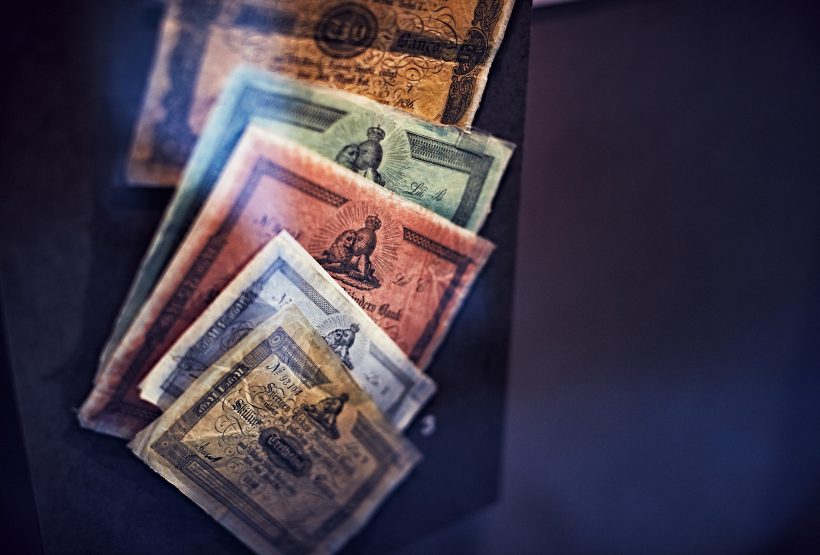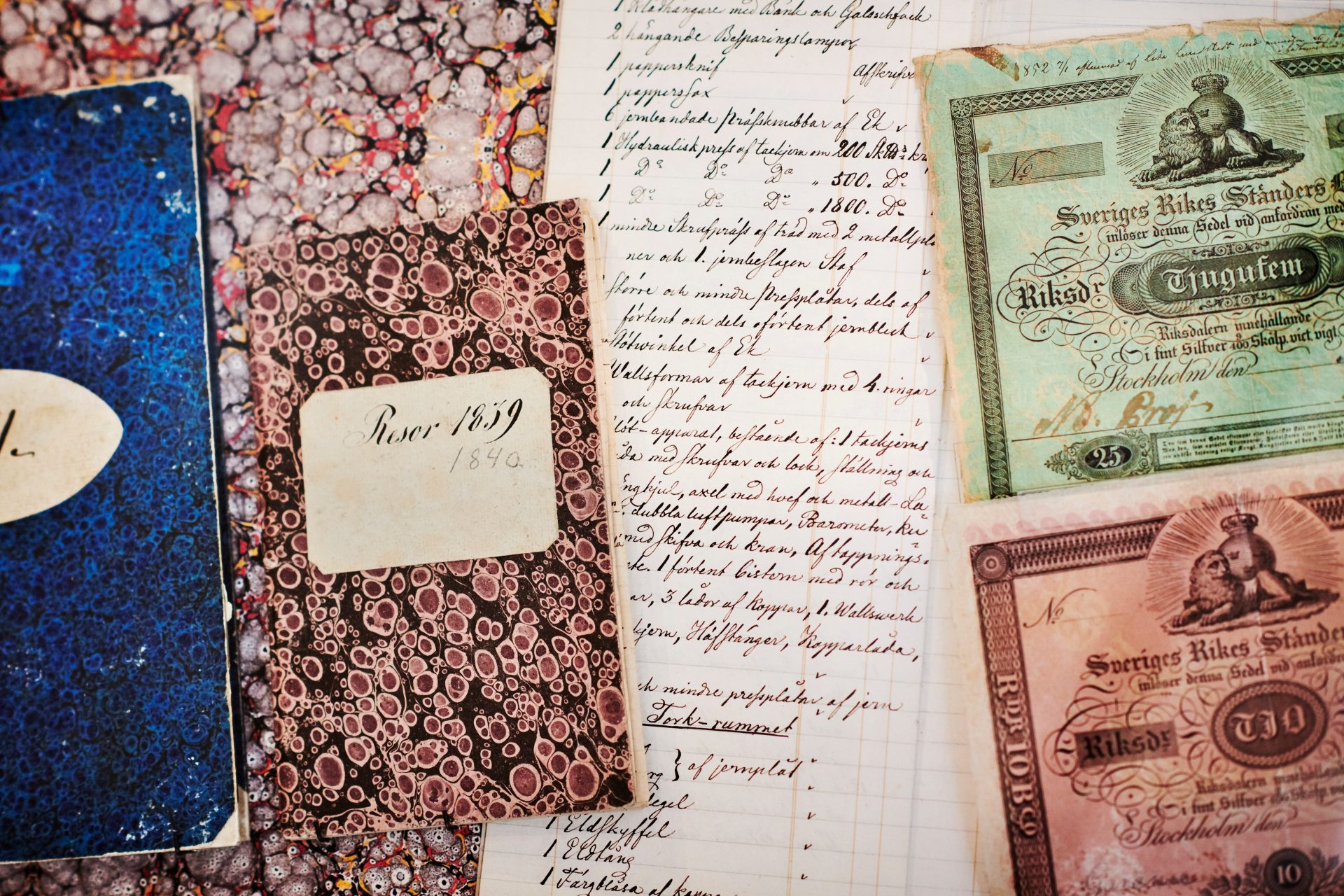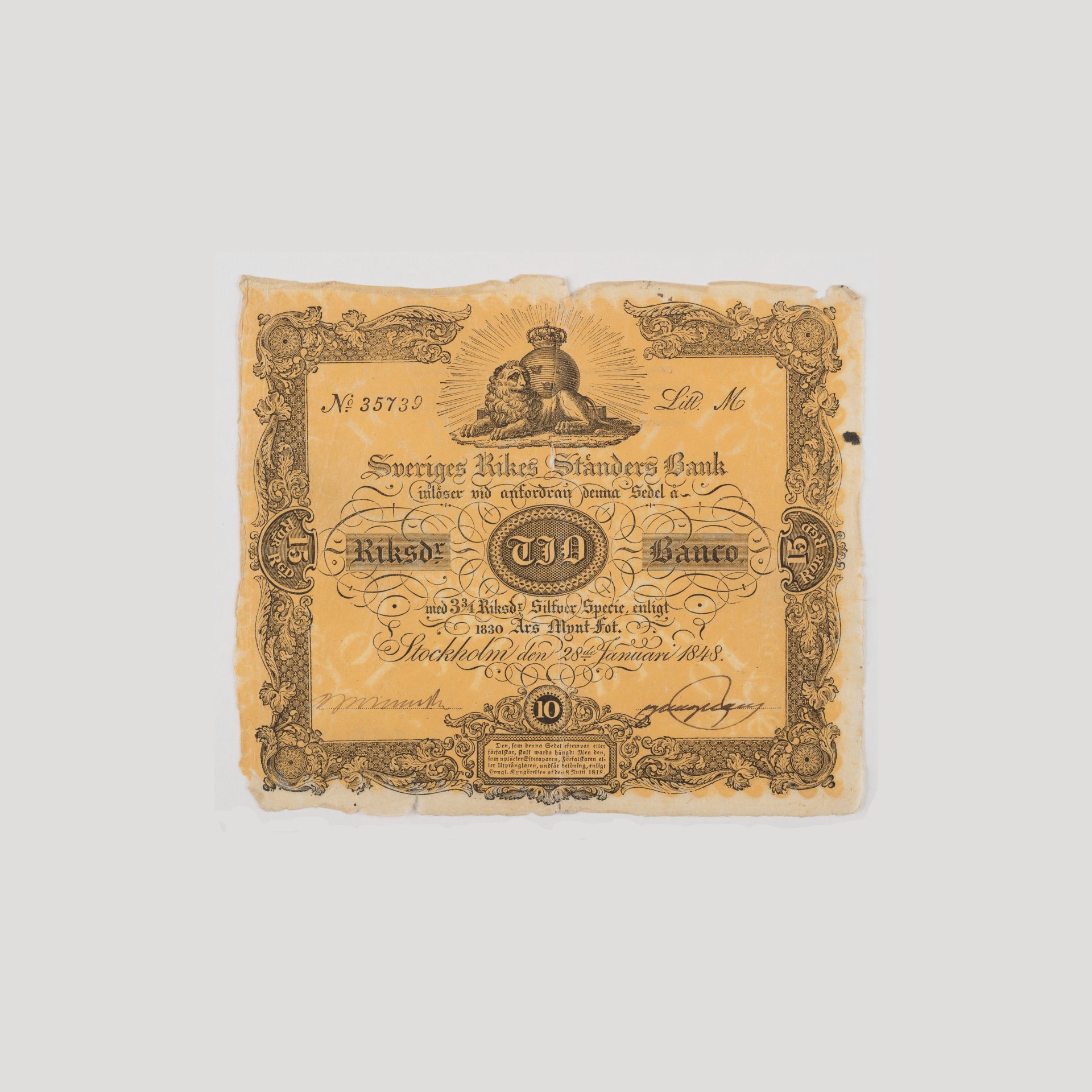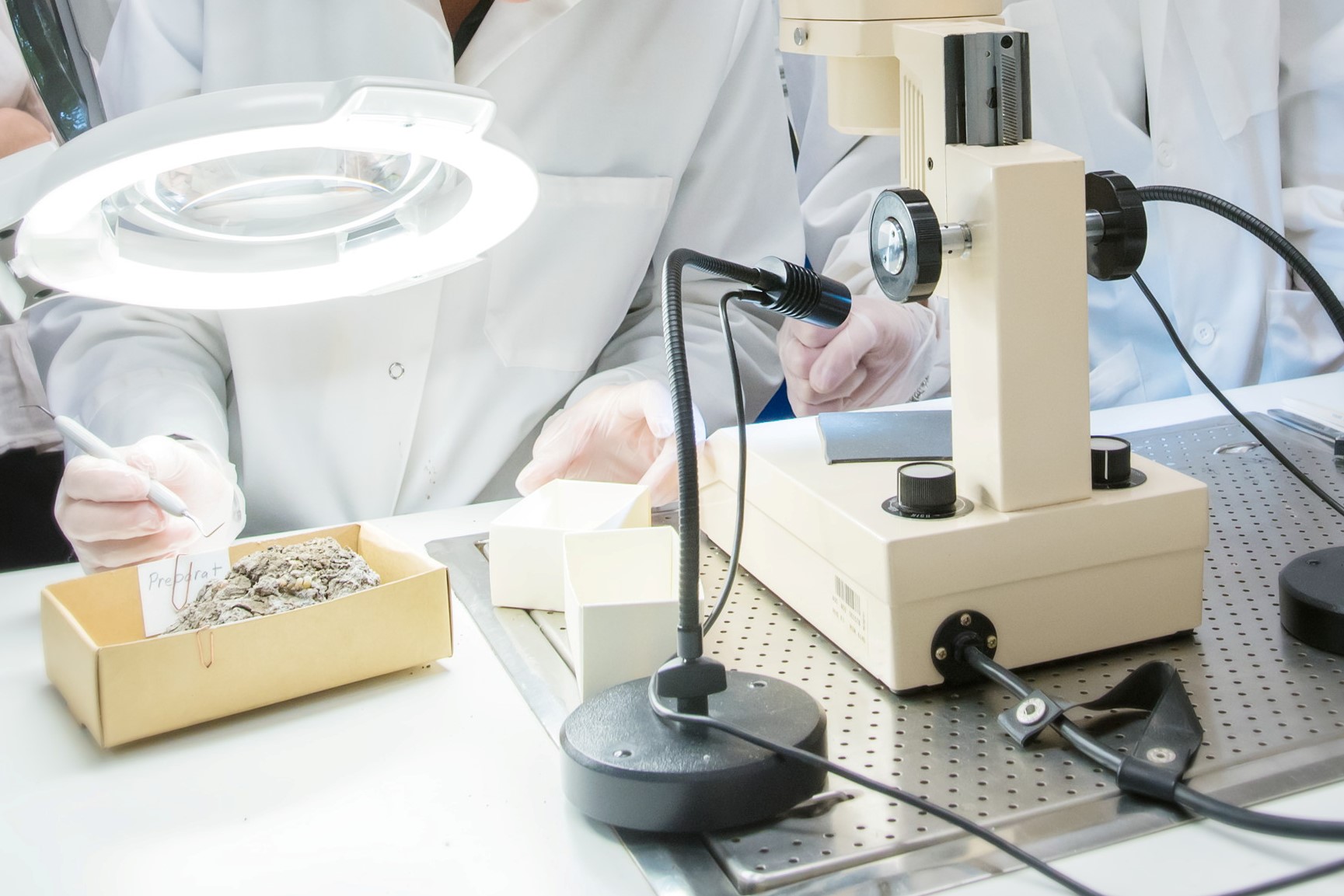
Collections and Research
When the mill converted to factory-produced paper in the 1930s, manager Karl Wallentin collected the old tools. The objects were originally placed in a room in the Klockhuset building. When Tumba Paper Mill Museum opened in 1968, a number of additional items had been saved and stored.
In 2001/2002 the Riksbank of Sweden donated the museum collection to the Royal Coin Cabinet (National Historical Museums), which has been running Tumba Paper Mill Museum since 2005.
In 2019, Tumba Paper Mill Museum received a major gift from the banknote manufacturer Crane AB containing press plates for watermark production and a large number of wax engravings. In addition, since 2005 the museum has received a small number of photographs, letters and similar objects related to the museum's field of activity.

Search the Collections
Our collection is digitized, and we are constantly working to enrich the information about our objects and to increase the number of images. You can search among the images and objects already available in our online database. All information is free to use, and most of the media is licensed under open Creative Commons licenses. Some images depict copyright-protected works; through an extended collective license agreement with Bildupphovsrätt in Sweden (BUS), the National Historical Museums have the right to display these images on Search the Collections.
We share the database with the other museums that are part of the National Historical Museums. Therefore, you will find objects from the Economy Museum, the Hallwyl Museum, the Swedish History Museum, the Royal Armoury, Skokloster Castle, the Tumba Paper Mill Museum, and the Swedish Holocaust Museum in the database.
Questions about the collections
Richard Kjellgren, Chief Antiquarian, is the contact person for the museum's collections and archives:
+46(0)8-519 553 14, richard.kjellgren@shm.se

